Maybe you’ve recently moved to the cloud. If you’ve been running workloads in the cloud for some time, then you may already know what it’s like. You’ve probably noticed that it can be hard to pinpoint where your cloud budget is going or what’s causing a specific performance issue.
If this describes your experience, you are not alone. Seventy-three percent of cloud decision-makers said they faced similar challenges. That’s where cloud optimization and its techniques and strategies come into play.
In this in-depth guide, we’ll cover what exactly cloud optimization is, why it’s important to consider, and more. By the end, you’ll have a clear understanding of the benefits of cloud optimization and how you can get started optimizing costs.
Table Of Contents
What Is Cloud Optimization?
Cloud optimization involves optimizing the performance of cloud applications. This may involve tuning performance, automating processes, and reducing latency. In addition, cloud optimization can help reduce costs by maximizing resource utilization.
It can also involve rightsizing cloud resources to match workload demand and cost efficiency goals.
In a DevOps environment, cloud optimization also involves determining the most efficient way to allocate cloud resources across different use cases. The objective of any cloud optimization strategy is usually to reduce waste, improve performance, and maximize the ROI of the cloud investment. Also, as a cloud user, you might hear the term cloud management a lot.
What is cloud management?
Cloud management is the process of managing the cloud computing environment, including infrastructure, applications, and data. It includes tasks related to monitoring, provisioning, configuration, optimization, security, and compliance.
The concept of cloud optimization extends beyond just managing the cloud environment. In cloud optimization, the focus shifts to maximizing the business value of the cloud.
Now here’s the thing.
Optimizing the cloud is not a once-and-for-all process. It is a process of continuous improvement based on the evolving needs of the business.
But you first need to know what’s working and what’s not working to make improvements.
By monitoring specific KPIs, DevOps professionals track whether the efforts put into the application are working as expected. Whether you use Azure, Google Cloud, or AWS, adopting robust cloud management best practices will be crucial to optimizing your cloud usage.
What Are Some Examples Of Cloud Optimization?
A solid cloud optimization strategy emphasizes more than just cloud cost reduction. The cloud optimization process also aims to improve software quality, application performance, and collaboration across the enterprise.
We have covered some top ways to optimize cloud operations here, especially if you use Amazon Web Services. There are also some cloud optimization techniques that you can use on other platforms, such as Microsoft Azure, Google Cloud, and Digital Ocean..
Other examples include:
- Rightsizing – Choose an instance that fits your basic requirements at the moment or in the foreseeable future
- Discount programs – Using reserved instances where applicable
- Automation – Use optimization tools to improve cloud transparency
- Go cloud-native – Consider using serverless computing and microservices
- Cloud governance – Set up a clear cloud governance structure
But why go through all that trouble? How does cloud optimization benefit you?
Why Is Cloud Optimization Important?
By implementing a cloud optimization strategy, you can ensure that your migration to the cloud pays off both in the short-term and over the long run.
Optimizing the cloud can reduce cloud costs, boost engineers’ productivity, and enable companies to move more operations from their data centers to the cloud.
Here are some more benefits of cloud optimization.
1. Optimizing the cloud helps to improve visibility
Peter Drucker, the legendary management consultant, had a quote that resonates with cloud optimization today. He said if you cannot measure it, you cannot improve it.
However, you can’t measure cloud performance unless you know the architecture behind it.
Using cloud optimization, your company can become more aware of how it uses the cloud and the tools it uses. That can help avoid significant cloud billing surprises, for instance.
Here is another example.
The Pay-as-you-Go model you use with your cloud services platform may seem efficient. It may seem easy to automatically scale your cloud requirements without reserving capacity in advance.
But just because you use one of the popular cloud providers doesn’t mean those capabilities are automatically enabled.
You may find that you are always overprovisioning cloud resources, leading to massive waste on technology.
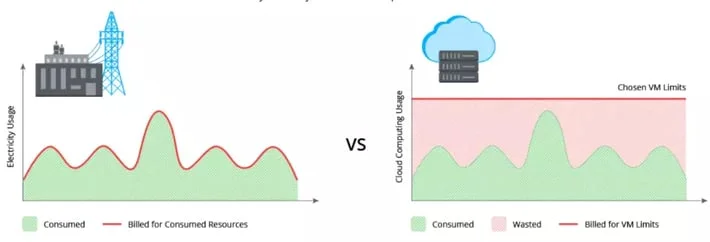
Credit: Jelastic about cloud computing capacity vs electricity consumption
Without deep visibility, estimating instances and optimal reserve capacity for your virtual operations becomes a wasteful, recurring problem. The cloud optimization process focuses on discovering underutilized features, over-provisioned resources, or mismanaged tools to find opportunities for improvements.
2. Cloud optimization helps reduce unnecessary cloud costs
Picture this. At the start of 2020, over 560 out of 750 cloud decision-makers told Flexera they were shifting focus towards increasing cloud cost savings.
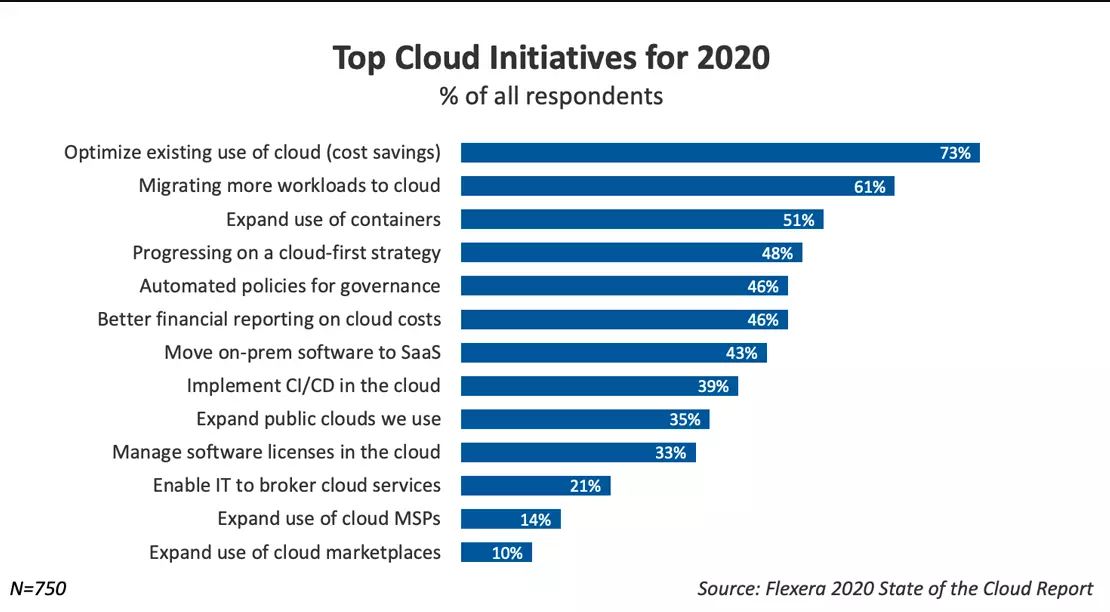
Credit: Flexera, 2020
Cloud cost optimization was the top priority for the fifth year in a row. Why?
The report came on the back of news that the average company wastes 35% of its cloud computing budget. Flexera showed that percentage translated to $10 billion in wasted public cloud spend. AWS users alone overpaid $6.4 billion in unnecessary cloud costs.
There’s more, though.
Most companies also understated how much they wasted by 15%.
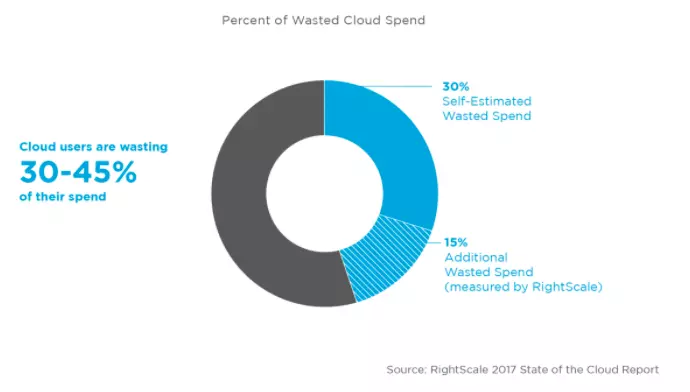
Moreover, 73% of US cloud users and 81% of UK cloud users treat cloud costs as fixed costs instead of variable costs, according to 451 Research. A few years back, another survey found that 95% of cloud users had cost inefficiencies due to one factor.
Gartner found that cloud service billing is a headache for most users. Most companies find it tough to query, read, and interpret pricing plans for cloud services.
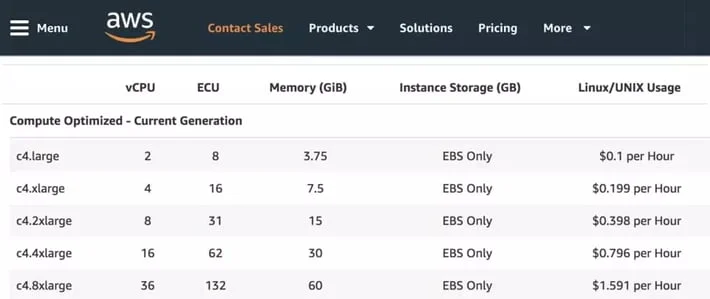
The sheer number of billing items and raw data can be overwhelming to non-data scientists. They are therefore unable to provide valuable insights to DevOps for optimizing costs in time.
Cloud optimization helps teams relate costs to value and price per unit, department, customer, segment, or product. Thus, instead of waiting for finance, they can make cost-aware decisions based on those insights.
3. Cloud optimization improves cloud utilization
Take Amazon Web Services, for example. AWS offers over 200 fully-featured cloud services. In some years, AWS also releases over 1,000 cloud platform, including over 30 new launches in a single keynote event.
With so many new features and older ones, keeping up can be challenging. Without optimizing best practices, you might miss out on several unnecessary tools you might be paying for.
Optimizing your cloud involves identifying such opportunities to eliminate dead weight. It can also help you find the bare minimum cloud services you need. Alternately, you can find ways to accomplish similar goals for less money, faster, and more efficiently.
4. A cloud optimization strategy will help improve your engineers’ productivity
By not having a gazillion features to optimize, engineers can focus on what they do best; creating code to solve problems. By using cloud optimization, your DevOps teams can spend less time needing to put out fires, maximizing their coding time.
Thus, you can spend your teams’ time and skills on the right tasks at the right time in order to mitigate risks and ensure optimal cloud performance.
5. Optimizing cloud applications fuels innovation and efficiency
Having your people focus on what they are best at, as well as what is efficient, is a sure way to discover new ways to accomplish tasks. You can also improve decision-making time and effectiveness by equipping different teams with cross-departmental skills.
Take equipping engineers with cloud cost intelligence, for example.Owen Rodgers, Cloud Economist at 451 Research, says this can help to prevent overspending before it occurs.
Researchers found that 80% of IT professionals receive alerts about overspending before it occurs. In contrast, 68% of finance professionals said they received overspend warnings after the expenditure had already occurred, meaning they couldn’t do anything to prevent it at that point.
But in companies where engineers were not included in cost decisions, they didn’t know what to do about a cost anomaly. They did not understand the cost impact of the cost spikes from a finance perspective. However, in companies where engineers are involved in cloud cost optimization, they know what steps to take to prevent cost overruns before liasing with finance.
So, what are some things you can do to boost cloud optimization in your organization?
What Are Some Cloud Optimization Best Practices And Tips To Implement Today?
Cloud optimization goes beyond optimizing cloud spend. It also highlights the need to share relevant cloud computing goals with relevant teams. In return, you can achieve more than just cloud cost savings.
In addition, it can help align your entire organization around your cloud goals, allowing you to reach them faster. We’ve gathered some best practices for cost optimization that you can implement right away to help you achieve this goal.
1. Get the full picture
Start collecting your cloud usage and cost data in a way that is easy to query and track over time. Cloud platforms offer some help here. For example, if you use AWS, exploring the AWS Cost and Usage Report or Cost Explorer is a good place to start.
You’ll want to create hourly AWS Cost and Usage reports (CURs). Or, you can view your daily costs summaries with AWS Cost Explorer.
Here is the thing. It is difficult to compare costs versus returns if you don’t know what’s happening in your cloud environment.
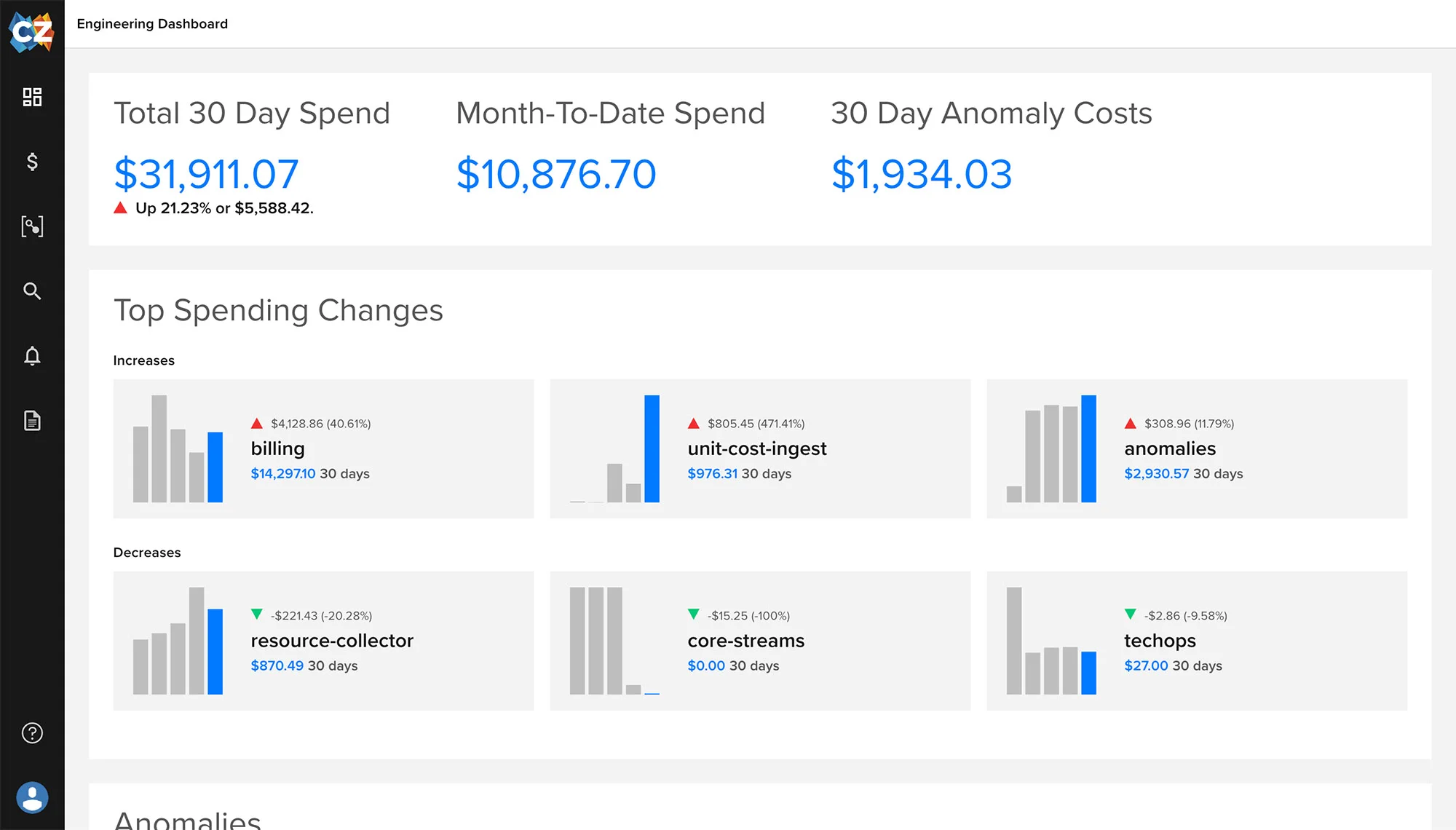
For example, 80% of participants in a 451 Research survey admitted that they were poor at managing cloud financials. Also, 69% of the respondents regularly overspend over 25% of their cloud budget due to cloud cost blindness or poor cloud cost visibility. Moreover, 57% said they were concerned daily about managing cloud costs, while 37% were afraid their business was already losing money.
2. Map cloud costs in the context of your business
You may have already noticed this frustrating occurrence. Cloud platforms provide usage and cost reports that suit how they work — not how your organization works.
Their reports only show you how much of their cloud platform’s services you used in a specific duration. But they give little insight into the specifics of how your business performed during that period.
For example, those reports do not show you how much you spent on a specific product, team, or customer. As a result, they don’t provide cost vs. return information for specific business units.
So you might not know:
- Whether spending more of your cloud budget on a specific product or customer will yield more returns
- If you should raise prices to protect your margins
- Whether removing a costly feature that most of your customers do not use can help lower unnecessary operating costs and performance issues
- If it is more efficient to move an expensive feature to a higher paid tiers to improve profitability (or even break even
- If switching platforms could help lower costs or performance issues
- Whether re-factoring your applications can help resolve performance, security, and cost issues in the cloud
Instead, you can use a robust cloud optimization tool to enable you to collect insights that apply specifically to your business. We’ll share a few good examples in the next section.
3. Create company-wide what and why standards
Knowing how your organization uses the cloud, and what it uses it for, will help you eliminate components that aren’t aligned with your quality, performance, and cost goals.
For most organizations, this means ensuring cloud spend directly correlates to value, such as revenue per customer.
But for that to happen, engineers and DevOps need to know how their everyday decisions impact cost at all stages of development. If you are using AWS, a good place to start is decoding your AWS bill.
When you create organization-wide standards for what resources are available and when to use them, AWS costs, quality, or performance in the cloud won’t be a surprise.
4. Measure performance
You’ll need to identify what metrics and KPIs to track when measuring cloud performance. The KPIs should align with the goals you have for assessing cloud performance.
Compare your cloud deployments with your expectations to see if they meet your expectations. It is common for organizations to compare cloud performance with the performance they experienced on-premises before migrating to the cloud.
You can use this as a starting point for determining how much business value the cloud brings. Over time, you can measure performance based on other standards, such as the average Cost of Goods Sold (COGS) target in your industry.
In that case, you can still use a cloud optimization tool to help you see what areas you could improve compared to expectations or specific KPIs.
What Are The Top Cloud Optimization Tools Today?
As your cloud-based workloads expand, your cloud infrastructure will continue to grow. But if you are experiencing cloud inefficiencies now, the issues will inevitably balloon instead of resolve on their own.
By using one of the best cloud optimization solutions here, you can boost your efficiency levels.
1. CloudZero
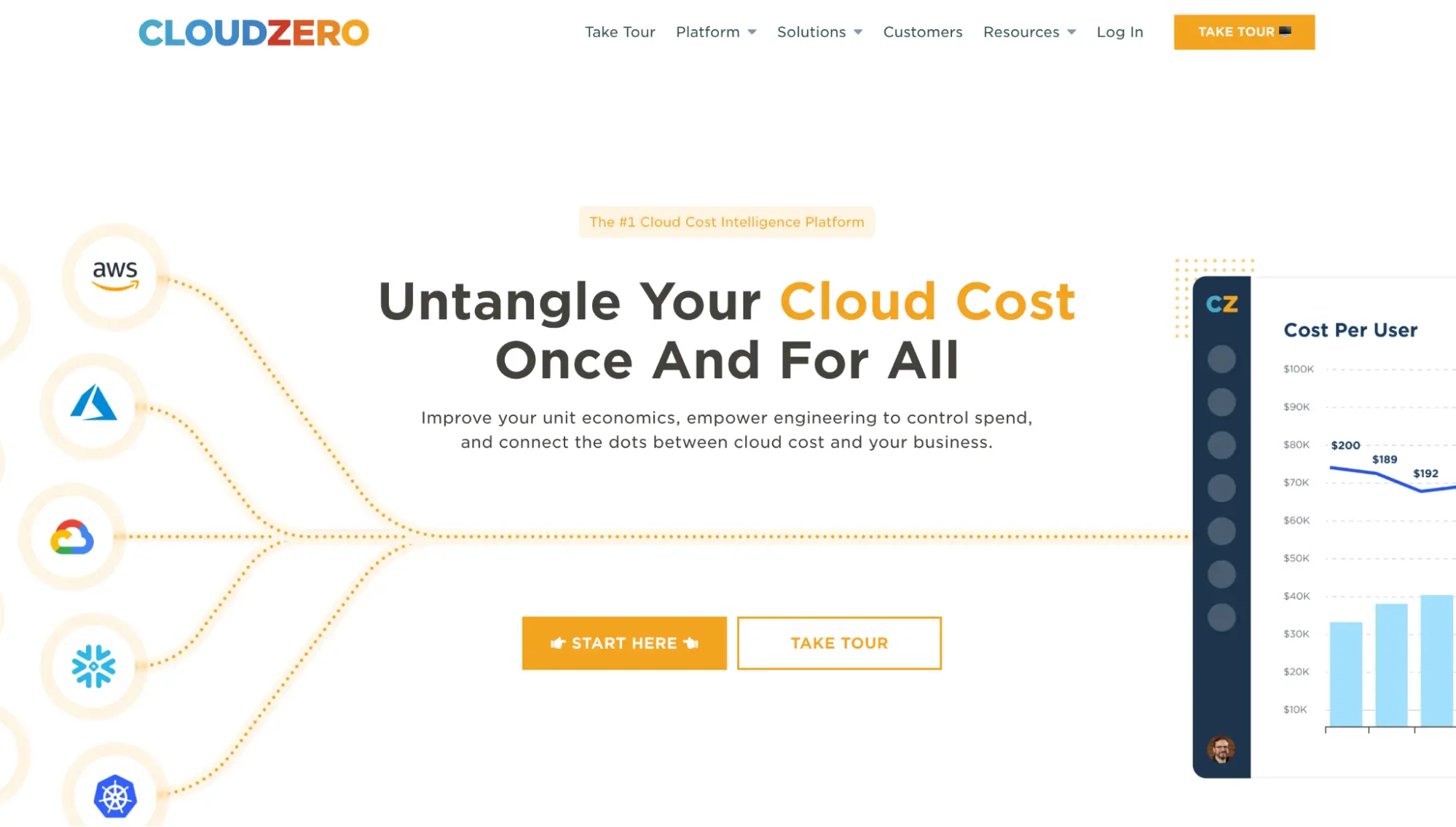
CloudZero is a cloud cost intelligence platform that makes it easy to extract rich cost insights from complicated cloud billing reports. CloudZero aligns cloud cost data to the people, products, and processes that generate them.
High-performing engineering teams use CloudZero to see who spends what, where, and why. Having visibility into cloud costs allows DevOps teams to assess the impact of their daily decisions on the organization’s bottom line. They can also pinpoint where to make tweaks to reduce unnecessary spending and maximize ROI.
2. AWS Cost Explorer
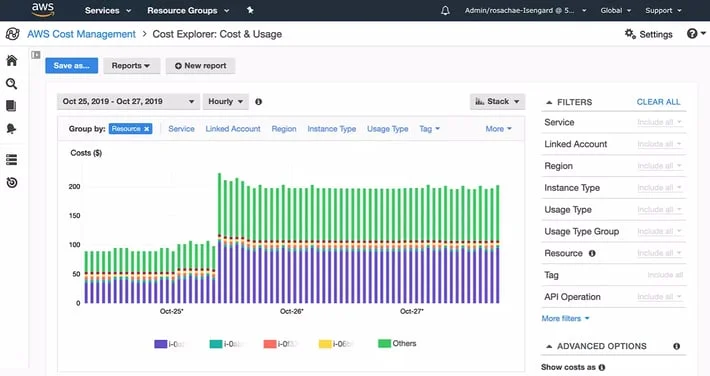
Amazon Web Services continues to be the dominant cloud platform today. The AWS Cost Explorer is the built-in tool AWS offers for generating AWS resource usage and cost reports for the last 12 months. The tool provides a high-level overview of AWS costs for finance teams.
The tool can save you money if you run a small operation and don’t plan on scaling much in the future. But if you need more granular cost insights, such as cost per customer, per team, or per feature, you may need to look elsewhere.
3. Azure Cost Management + Billing
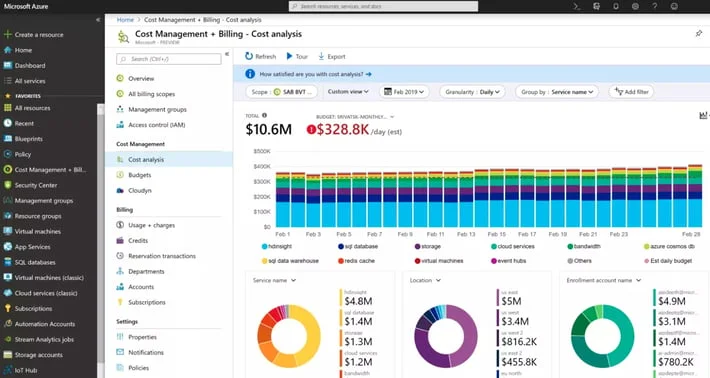
Microsoft Azure offers this as its default tool for optimizing cloud costs. It provides a high-level view of cloud costs, similar to AWS Cost Explorer.
In addition to setting budget notifications, it integrates with AWS and PowerGI (using Cloudyn), and you won’t have to invest extra to access the overviews.
Like Cost Explorer, you’ll not be able to view granular cloud costs optimization metrics such as cost per customer, per environment, or per engineering deployment.
4. Amazon CloudWatch
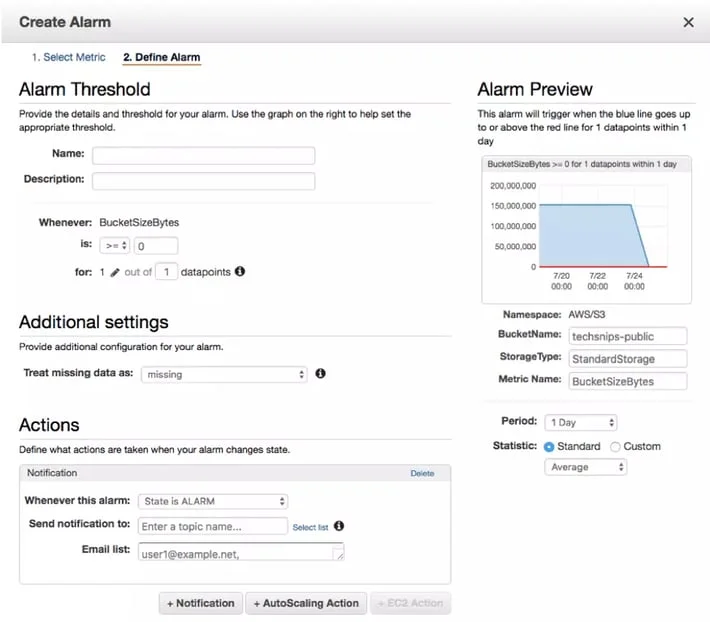
AWS CloudWatch helps you monitor your EC2 instances as an AWS customer. This can help you detect performance issues caused by compute-related problems.
With CloudWatch, you can set alerts to receive notifications when changes occur in different AWS services.
For example, you can choose to receive an alert when your EC2 utilization dips below a certain threshold (%). That can help you determine if that instance is underused, unnecessary, or over-provisioned, so you can right-size it accordingly.
5. BMC Multi-Cloud Management
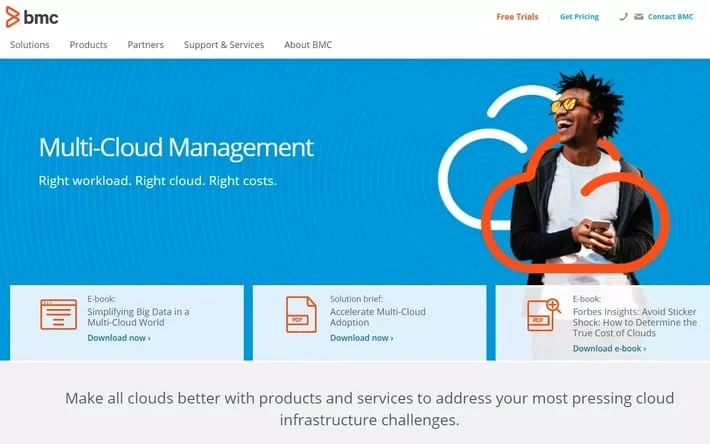
If you want to explore a multi-cloud strategy to take advantage of different cloud provider’s best features, this tool can help.
BMC Multi-Cloud Management is especially ideal for providing multi-cloud visibility, automating dependency mapping, and ensuring tight security over hybrid assets. The goal is to help engineers and DevOps teams maintain seamless operations in a multi-provider environment.
How To Optimize Your Cloud Spend The Easier Way
Optimizing cloud costs is not the only objective of cloud optimization. Still, it’s a huge deal. Studies show that organizations waste up to 32% of their annual cloud budgets on unused cloud services.
They report weaker margins, which eats into their market valuation (and prevents them from attracting investors to fund growth).
But this doesn’t have to be your story.
Recently, CloudZero was able to help Drift save $4 million annually in cloud costs and helped Malwarebytes save 10 hours weekly on manual cost management activities.
In addition, CloudZero delivers immediately actionable insights into your cloud costs. That includes cost per customer, per team, per feature, per project, and more.
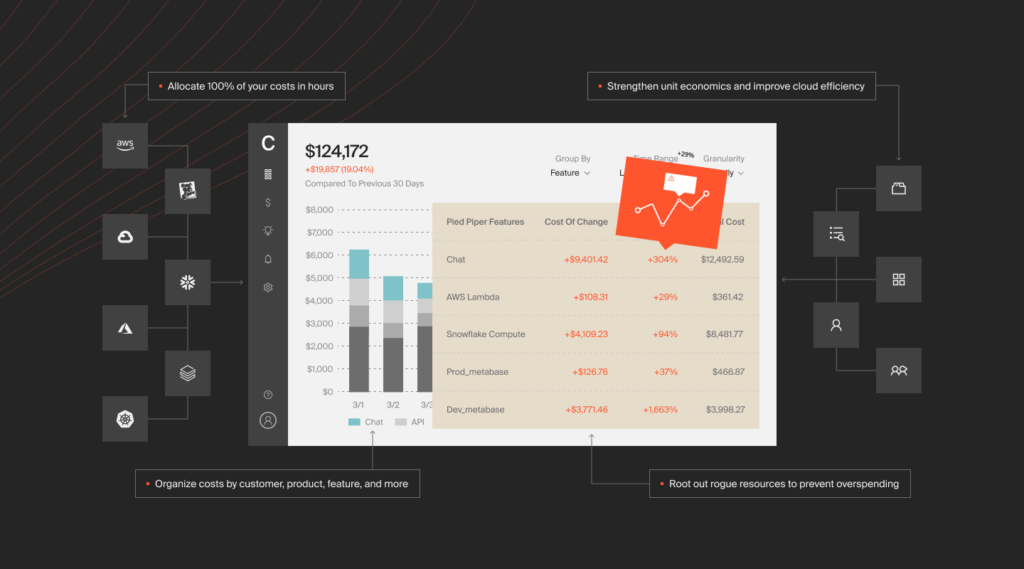
Using this approach, you can identify who, what, and why your cloud costs are changing. This further makes it easier to pinpoint areas where you can cut unnecessary costs without sacrificing system performance or innovation.
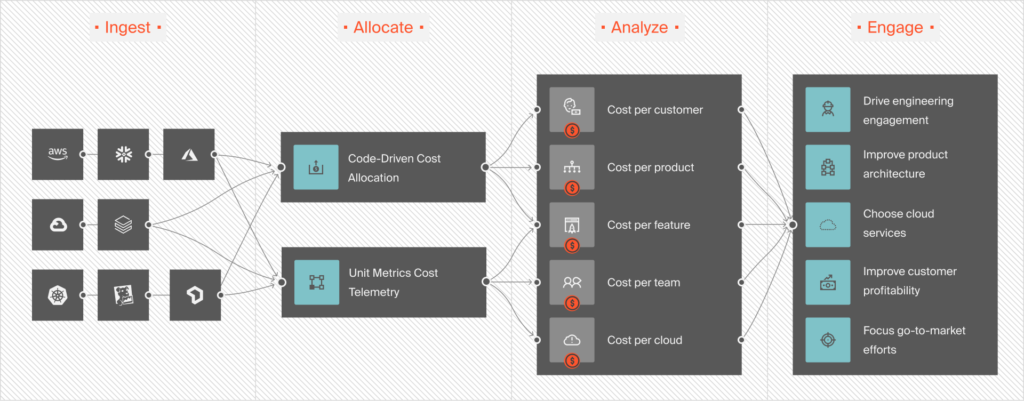
Even better, you can determine where to invest more to maximize your return on investment. For example, you can use cost per customer to determine which customer segments are your most profitable. You can then focus more of your marketing efforts on them to increase your revenue and bottom line.
Companies like Remitly now use CloudZero to allocate 50% more cloud costs without tagging. Drift has saved nearly $4 million so far. Here’s your chance, too.
Schedule a demo today to experience CloudZero in your cloud environment first-hand.








